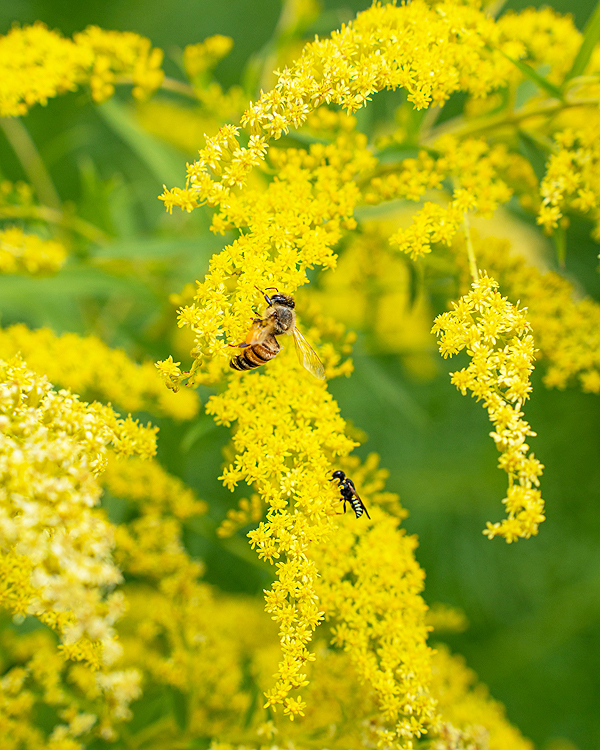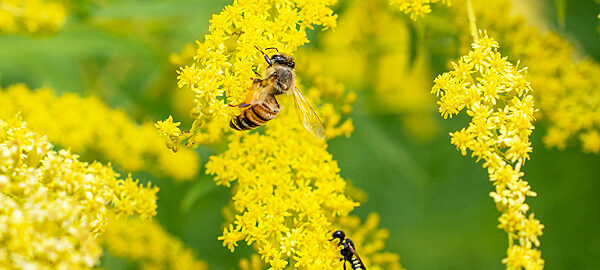
The noted columnist Elizabeth Licata was recently quoted: “Goldenrod has its place in the civilized garden. This plant was long confused with ragweed. At least that myth has been busted.”
Goldenrod (Solidago) is a genus of herbaceous perennials in the aster family with up to 120 species. It displays small, bright yellow pretty flowers in dense clusters on top of tall stems from July through October.
Sadly, it gets the blame for itchy eyes and runny noses, but the culprit is actually ragweed. Both plants are members of the Asteraceae family, grow in roadside ditches and open fields, and bloom at the same time.
Goldenrods are single-stemmed perennials. Ragweeds are annuals and highly branched from the bottom upward.
Ragweed (Ambrosia) flowers are inconspicuous and its leaves are lobed, while goldenrod’s leaves are not lobed.
Goldenrod pollen is very heavy and isn’t blown around by the wind like ragweed. Thankfully, as a late-season flower, goldenrod provides food for our pollinators when many other flowers are winding down.
Goldenrod leaves may be cooked and served like spinach, while its flowers may be used as edible garnishes or tossed in salads.
Food for us humans, too!

